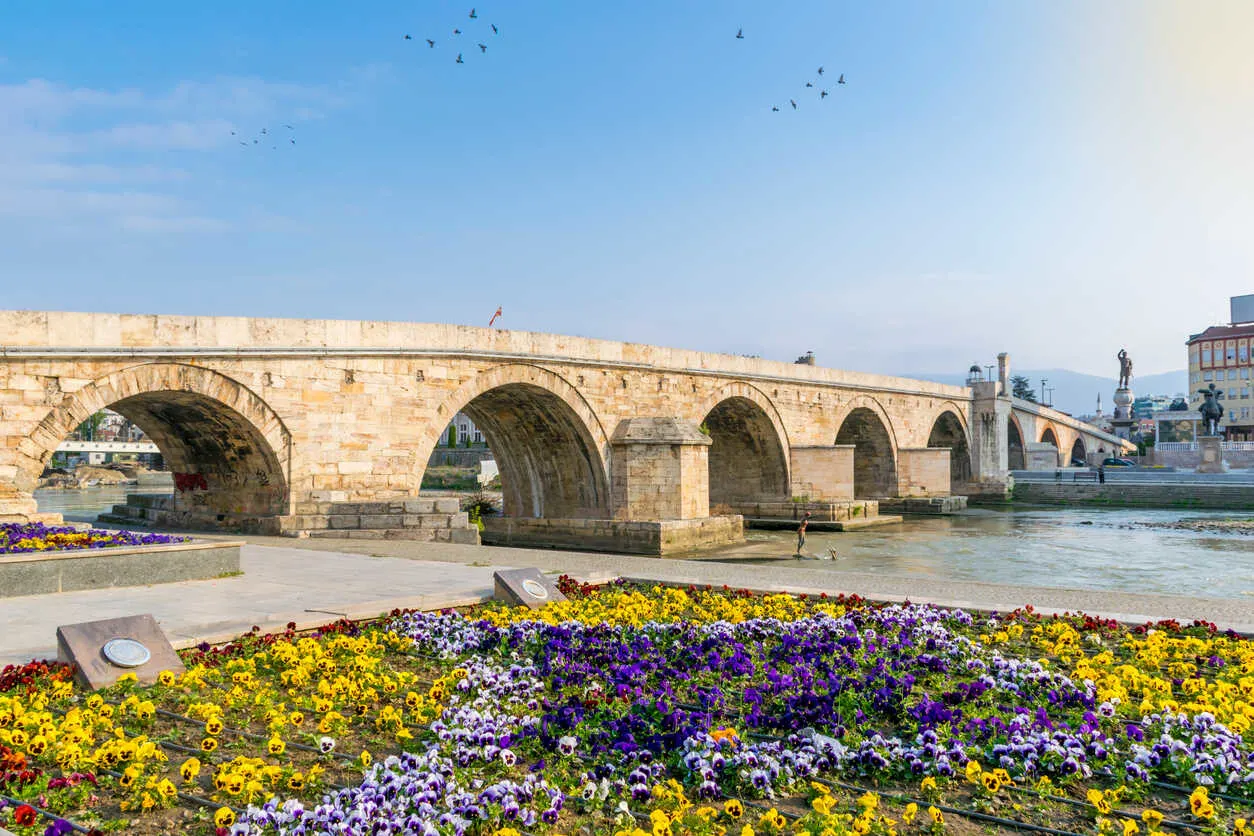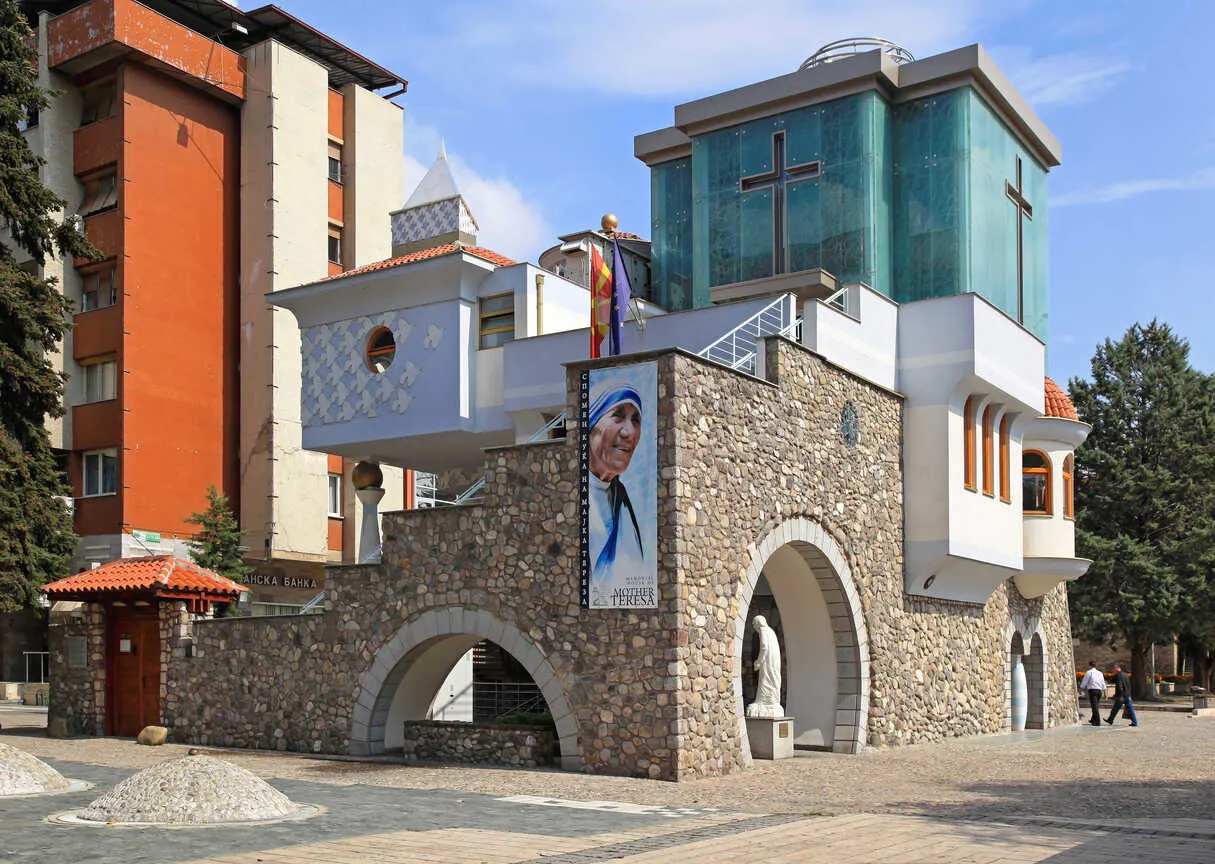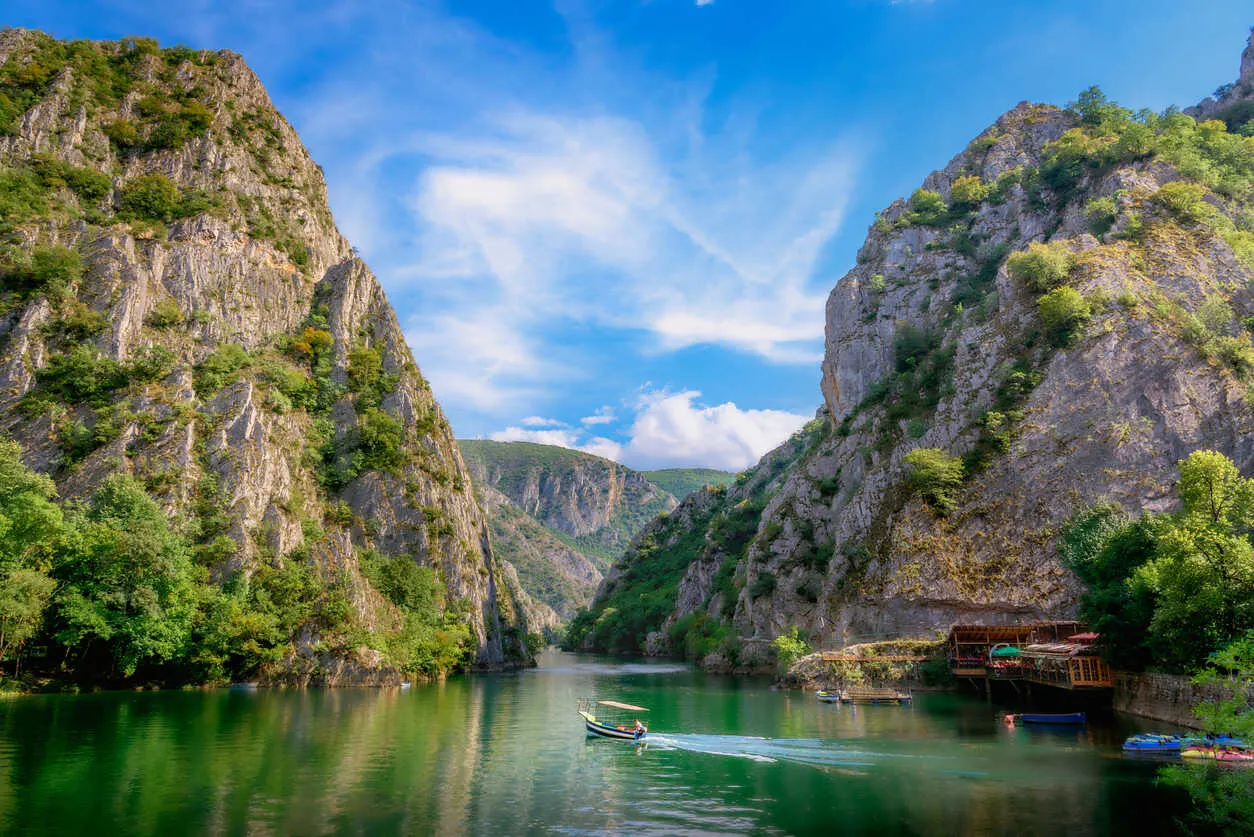As the bus rumbled through the night from Italy to Skopje, my journey into the heart of North Macedonia began. Though the language was unfamiliar, the warmth and character of the people around me made it easy to feel at home. On this lengthy overnight journey, I was the only outsider among a bus full of locals, yet their kindness bridged the gap between us.
Across from me, a young boy, completely absorbed in his video game, soon drifted off to sleep in his mother’s lap. In a mischievous moment, he tugged at her fake eyelashes, seeking her attention. Nearby, two brothers took turns resting on each other’s shoulders, their quiet companionship a testament to their bond. A young couple, with their tiny, almost silent baby, rocked her gently in a blanket whenever she stirred.
In these small moments, I began to sense the essence of North Macedonia. The warmth and connection shared by these strangers echoed the spirit of Skopje itself—a city where centuries of history, diversity, and resilience come together in a modern capital full of life. This warmth reflects the soul of Skopje, a city where ancient history and modern life blend seamlessly. This was my first glimpse into a place where past and present coexist harmoniously, much like the passengers on that bus.
YOUR CHANCE TO RETIRE OVERSEAS NOW
YOUR CHANCE TO RETIRE OVERSEAS NOW
Sign up for our free daily IL Postcards e-letter and we'll immediately send you a free report on the WORLD'S #1 RETIREMENT HAVEN—plus 9 more of the most desirable and very affordable destinations where you can upgrade your retirement right now. Each day you'll learn about the best places to retire, travel, buy real estate and enjoy life overseas.
By submitting your email address, you will receive a free subscription to IL Postcards, Overseas Dream Home, The Untourist Daily and special offers from International Living and our affiliates. You can unsubscribe at any time, and we encourage you to read more about our Privacy Policy.
Skopje: Where Cultures and Histories Collide

Skopje, North Macedonia’s capital, is a city shaped by Roman, Byzantine, Ottoman, and Yugoslav influences. North Macedonia, a Balkan country that became independent in 1991 after the dissolution of Yugoslavia, boasts a rich and diverse history. Skopje reflects that blend of heritage.
I was drawn to Skopje because of its affordability, cultural diversity, and non-Schengen status, making it an attractive destination for summer exploration. For instance, I rented an Airbnb without a kitchen for about $600 a month, a real bargain for a European capital in peak season.
Groceries in Skopje are cheaper than in other European cities, and dining out is especially affordable. Restaurants here do not have the typical cover charge seen in other European cities, saving about $2–$3 USD per person. The local currency is the Macedonian Denar, and staples like daily coffee, fresh bread, and pastries can be bought for under a dollar, making even the smallest indulgences feel like luxuries.
Skopje’s Journey: From Fortresses to Monuments

Skopje is a compact, walkable city with most attractions centered around Macedonia Square, the beating heart of the city. The 15th-century Stone Bridge connects modern Skopje with the historical Old Bazaar across the Vardar River. Skopje’s skyline, featuring both churches and mosques, serves as a testament to its spirit of coexistence.
The city’s history dates back to ancient times, with evidence of settlements as far back as 4000 BC. Skopje’s blend of cultures—Roman, Byzantine, Ottoman, and Yugoslav—has left its mark on the architecture, traditions, and daily life of the city. The Kale Fortress, perched high above Skopje, symbolizes the city’s long-standing strategic importance and offers panoramic views of its surroundings.
In recent years, Skopje has undergone a significant transformation, marked by the controversial Skopje 2014 project, which aimed to revitalize the city center following a devastating 1963 earthquake. The project introduced a blend of neoclassical and baroque-inspired buildings and statues, reshaping the city’s image. Although debated, this modernization effort adds a layer of complexity to Skopje’s urban landscape, where history and modernity stand side by side.
Cultural Treasures and Turkish Influence in Skopje

Skopje is alive with culture, offering museums, galleries, theaters, and music venues, including an Opera & Ballet House. One of the most notable experiences of my visit was the Mother Teresa Memorial House, situated close to the church where she was baptized. This museum is a tribute to the Nobel Peace Prize-winning humanitarian, showcasing her life’s journey, personal artifacts, and the values of love and compassion she espoused.
As someone who lives in Turkey, I was pleasantly surprised by Skopje’s deep Turkish influence, seen throughout the city. This presence is especially prominent in the Old Bazaar, one of the Balkans' largest and best-preserved marketplaces. A stroll through the cobbled streets reveals Ottoman and Byzantine architecture, along with shops offering everything from Turkish coffee to handmade jewelry.
Navigating Skopje: Travel Tips and Local Transport
Skopje is well connected internationally, with airports in Skopje and Ohrid, and offers convenient bus and rail access to nearby countries like Kosovo, Albania, and Greece. Within the city, Skopje’s iconic red double-decker buses, reminiscent of London’s, provide an easy and charming way to get around. Skopje is also increasingly bike-friendly, with dedicated lanes and bike-sharing options.
Day Trips from Skopje: Nature and History Beyond the City

Skopje’s urban center is surrounded by natural beauty, including Vodno Mountain and Matka Canyon. A popular excursion is to the Millennium Cross on Mount Vodno, one of the largest crosses in the world, commemorating 2,000 years of Christianity. From the summit, breathtaking panoramic views of Skopje unfold, rewarding those who take the cable car or hike up.
Matka Canyon, just 15 kilometers southwest of the city, offers a peaceful escape into nature. The canyon is rich in history and natural beauty, with medieval churches, monasteries, and an impressive diversity of flora and fauna. Visitors can explore the canyon by hiking, kayaking, or taking boat tours into the caves—each offering a unique glimpse into this natural treasure.
Skopje’s Enduring Spirit of Warmth and Unity
Skopje is a city where the ancient and the modern coexist, where the influence of empires long past meets the energy of a growing, dynamic city. Its history, resilience, and cultural diversity make it a city of contrasts and cohesion. For those seeking an affordable yet enriching European adventure, Skopje offers both in abundance. The warmth I experienced on that bus ride to Skopje was echoed throughout my stay, reflected in the people and the city’s enduring spirit of inclusiveness and unity.
YOUR CHANCE TO RETIRE OVERSEAS NOW
YOUR CHANCE TO RETIRE OVERSEAS NOW
Sign up for our free daily IL Postcards e-letter and we'll immediately send you a free report on the WORLD'S #1 RETIREMENT HAVEN—plus 9 more of the most desirable and very affordable destinations where you can upgrade your retirement right now. Each day you'll learn about the best places to retire, travel, buy real estate and enjoy life overseas.
By submitting your email address, you will receive a free subscription to IL Postcards, Overseas Dream Home, The Untourist Daily and special offers from International Living and our affiliates. You can unsubscribe at any time, and we encourage you to read more about our Privacy Policy.
